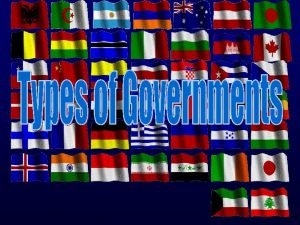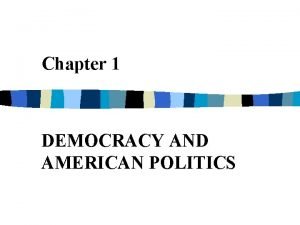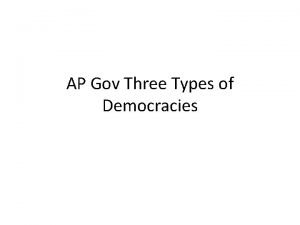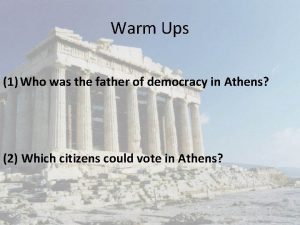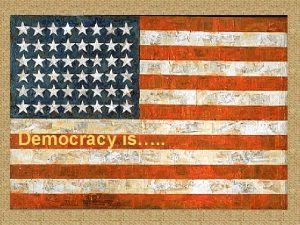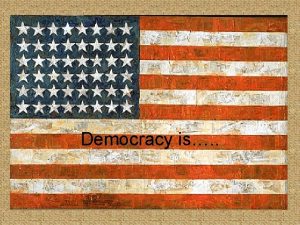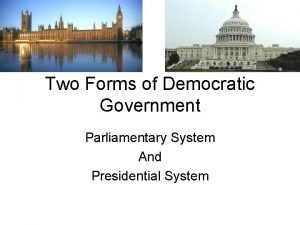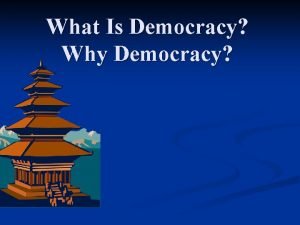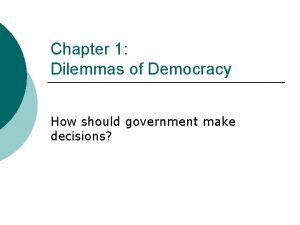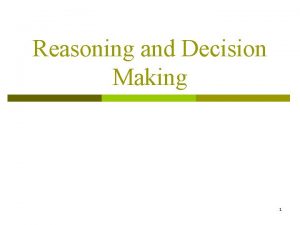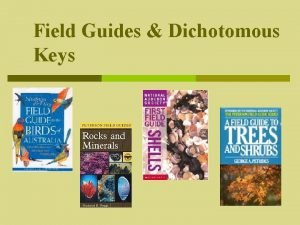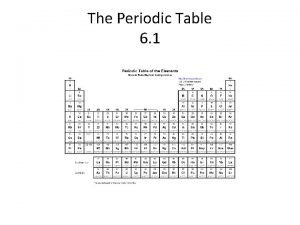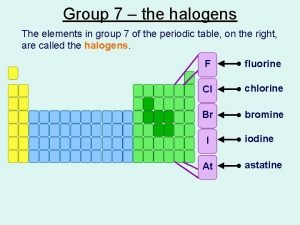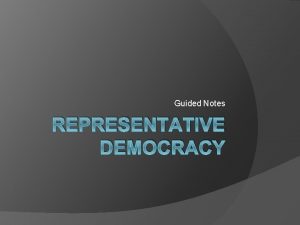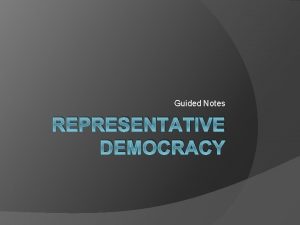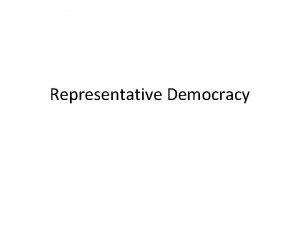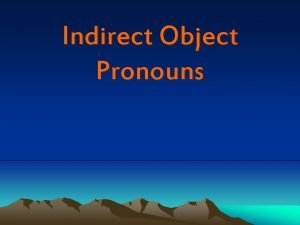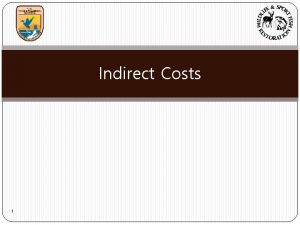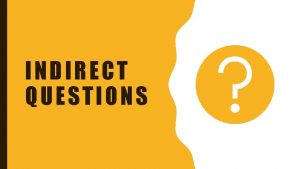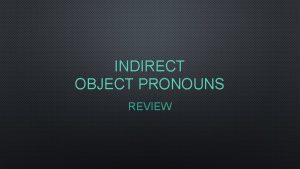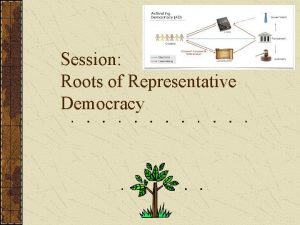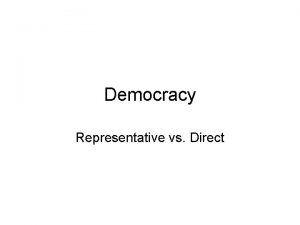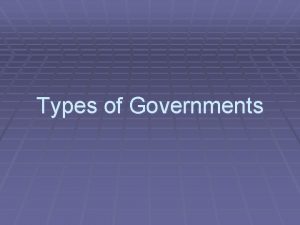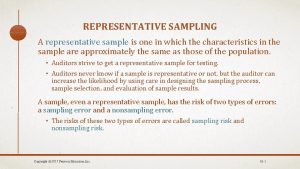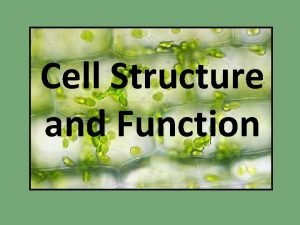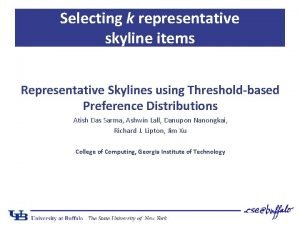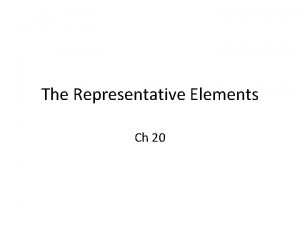Indirect Democracy In an indirect or representative democracy
















- Slides: 16

Indirect Democracy • In an indirect or representative democracy, the people elect agents who make and carry out the laws. • These representatives rule with the consent of the governed and can be removed by the people at election time. Chapter 1, Section 2 Copyright © Pearson Education, Inc. Slide 1

Example Democracies • The United Kingdom is a constitutional monarchy. • Most power lies with the Parliament, which is elected by the people. • The queen is the head of state, while the head of government is the Prime Minister, who is the head of the leading party in Parliament. Chapter 1, Section 2 Copyright © Pearson Education, Inc. Slide 2

Example Democracies, cont. • The United States is a constitution-based federal republic. • The President and members of Congress are chosen by the people. • The President is both Chief of State and Head of Government. Chapter 1, Section 2 Copyright © Pearson Education, Inc. Slide 3

Unitary Government • In a unitary model, all power belongs to the central government, which may grant some powers to local governments. • The powers of the central government may be limited or unlimited. • Most governments in the world are unitary in form. Chapter 1, Section 2 Copyright © Pearson Education, Inc. Slide 4

Federal Government • In the federal model, power is divided between a central government and several local governments, usually according to a constitution. • The U. S. and some 25 other states have federal forms of government. Chapter 1, Section 2 Copyright © Pearson Education, Inc. Slide 5

Confederate Government • A confederation is an alliance of independent governments that grant limited powers, usually involving defense or foreign affairs, to a central government. • The European Union is similar to a confederation. Chapter 1, Section 2 Copyright © Pearson Education, Inc. Slide 6

Introduction • What are political parties, and how do they function in our two-party system? – A party is a group of people who try to control government by winning elections and holding public office. – Political Parties: • • • Chapter 5, Section 1 Nominate candidates Inform and inspire supporters Encourage good behavior among members Govern once in office Perform oversight on government actions Copyright © Pearson Education, Inc. Slide 7

What Parties Do • Parties express the will of the people in government. They can also encourage unity by modifying conflicting views and encouraging compromise. • Parties nominate—find, recruit, prepare, and gather public support for—qualified political candidates. • Parties inform the public and try to shape public opinion, using all forms of media to campaign for or against opposing candidates and policy issues. Chapter 5, Section 1 Copyright © Pearson Education, Inc. Slide 8

Roles of Parties • Parties act as a “bonding agent” to encourage accountability among their candidates and office holders. • Parties play a key roles in governing at all levels. – Legislatures are organized along party lines and parties shape the electoral process. – Partisanship guides many legislative votes and appointments to public office. – Parties provide channels of communication between the branches of government. Chapter 5, Section 1 Copyright © Pearson Education, Inc. Slide 9

Presidential Government • A presidential government divides executive and legislative power between two branches. • The details of this separation of powers are spelled out in a constitution. Chapter 1, Section 2 Copyright © Pearson Education, Inc. Slide 10

Multiparty Systems • Multiparty systems are used by many democracies. – They have several major and many smaller parties. – Each party is based on a particular interest. • These interests can include economic class, religion, or political ideology. Chapter 5, Section 1 Copyright © Pearson Education, Inc. Slide 11

Multiparty Systems, cont. • Multiparty systems tend to represent a more diverse group of citizens. – Supporters admire this feature, arguing that it gives voters many more choices among candidates and policies. – However, this diversity often makes multiparty systems less stable. The power to govern must usually be shared by several parties who join in a coalition. Chapter 5, Section 1 Copyright © Pearson Education, Inc. Slide 12

Parliamentary Government • In a parliamentary government, the legislature chooses the executive, which is part of the legislature and under its control. • A majority of world governments use the parliamentary system, which lacks some checks and balances but promotes cooperation between the executive and legislative branches. Chapter 1, Section 2 Copyright © Pearson Education, Inc. Slide 13

Parliamentary Government, cont. • The prime minister is the head of the leading party in Parliament and chooses cabinet members from the Parliament. • If the Parliament loses confidence in the Prime Minister and cabinet, elections are held to form a new government. Chapter 1, Section 2 Copyright © Pearson Education, Inc. Slide 14

characteristics • • Minimal conflict exec and legis Less effective minority Efficiency Multiple parties Fragmented seats in legis. Multi-party coalitions If no maj. Coalition required to elect exec. Coalition gov’ts are unstable Chapter 1, Section 2 Copyright © Pearson Education, Inc. Slide 15

One-Party Systems • Only one political party exists, offering no real choice. • Some U. S. states and districts are “modified one -party systems. ” – In these places, one party repeatedly wins most of the elections and dominates government. Chapter 5, Section 1 Copyright © Pearson Education, Inc. Slide 16
 Representative democracy examples
Representative democracy examples Struggle chapter 1
Struggle chapter 1 Pluralist democracy
Pluralist democracy What is indirect democracy
What is indirect democracy Political cartoon popular sovereignty
Political cartoon popular sovereignty Pluralist democracy cartoon
Pluralist democracy cartoon Parliamentary system vs presidential system
Parliamentary system vs presidential system Form of democracy
Form of democracy Indirect democracy
Indirect democracy Representative particle
Representative particle Np - /availability-heuristics/
Np - /availability-heuristics/ Representative particle
Representative particle Dichotomous key to representative birds
Dichotomous key to representative birds Gain lose electrons periodic table
Gain lose electrons periodic table Representative elements
Representative elements Group 7
Group 7 Wellcare provider relations representative
Wellcare provider relations representative
